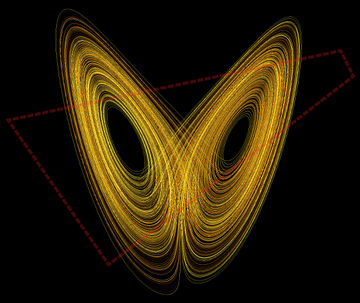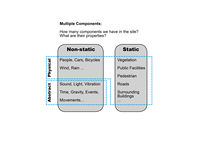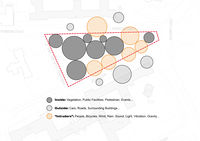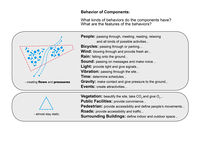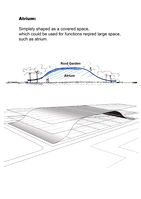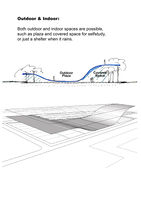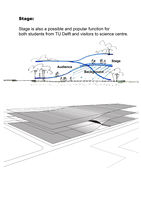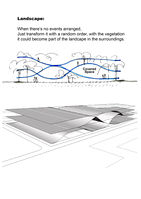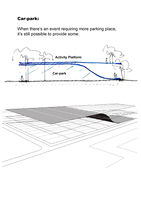atom09:Proposal
| Line 46: | Line 46: | ||
They could be categorized as: Static and Non-static; Physical and abstract; Outside and Inside the boundary... | They could be categorized as: Static and Non-static; Physical and abstract; Outside and Inside the boundary... | ||
| − | Non-static could provide parametric values, which we call it INPUT, to change the states of | + | Non-static components could provide parametric values, which we call it INPUT, to change the states of other components; |
| − | the | + | the components which receive inputs can be either static or non-static, and they give OUTPUT to circulate the "interconnectivity" between different components. |
| Line 60: | Line 60: | ||
</div> | </div> | ||
<div style="float: left; width: 300px; margin-right:20px; text-align:left"> | <div style="float: left; width: 300px; margin-right:20px; text-align:left"> | ||
| − | '''-Intruders:''' | + | '''- Intruders:''' |
| + | Components could be either inside or outside of the system, while some of the non-static ones are moving from outside to inside or from inside to outside; | ||
| + | |||
| + | We call the moving non-static components "intruders". | ||
| + | |||
| + | Intruders are the most proper components which could provide inputs, they are the source of parameter values, | ||
| + | |||
| + | such as people, bicycles, sound, lights and movements... | ||
| Line 78: | Line 85: | ||
'''- Behavior of Components:''' | '''- Behavior of Components:''' | ||
| − | + | Each component within the system has its specific behavior, like entering the site is the most typical behavior of people. | |
| − | + | ||
| − | + | Most behaviors of non-static components are creating some flows and pressures by moving, such as the flows of walking people, they give inputs to the site; | |
| − | + | And some of the static components are more likely just to receive inputs and give outputs, they may not give inputs. | |
| − | + | ||
| − | + | ||
</div> | </div> | ||
| Line 98: | Line 102: | ||
'''- Relationship of Components:''' | '''- Relationship of Components:''' | ||
| − | |||
| − | |||
| − | |||
| − | |||
| − | |||
| − | |||
| − | |||
Revision as of 13:01, 3 October 2011
Contents |
Aim
To Create A Dynamic System by Parametric Method
- Restore the site to make it a useful component of the entire system of the city;
- Reorganize the site itself to be an effective and efficient system - an OPEN SYSTEM.
Three criteria:
Components, Behavior and Interconnectivity.
As an open system, each component has a certain behavior.
Component A's behavior affects component B, and B gives feedback to influent A,
this is a complete interconnectivity and interaction.
The image on the left best describes the relationship between 2 components:
They're linked with each other, and they're affecting each other.
Multiple Components
- Multiple Components:
There're different kinds of components within a system; They could be categorized as: Static and Non-static; Physical and abstract; Outside and Inside the boundary...
Non-static components could provide parametric values, which we call it INPUT, to change the states of other components;
the components which receive inputs can be either static or non-static, and they give OUTPUT to circulate the "interconnectivity" between different components.
- Intruders:
Components could be either inside or outside of the system, while some of the non-static ones are moving from outside to inside or from inside to outside;
We call the moving non-static components "intruders".
Intruders are the most proper components which could provide inputs, they are the source of parameter values,
such as people, bicycles, sound, lights and movements...
- Behavior of Components:
Each component within the system has its specific behavior, like entering the site is the most typical behavior of people.
Most behaviors of non-static components are creating some flows and pressures by moving, such as the flows of walking people, they give inputs to the site;
And some of the static components are more likely just to receive inputs and give outputs, they may not give inputs.
- Relationship Components.jpg
- Relationship of Components:
Parametrical Directions
A system is closed if no material enters or leaves it;
it's open if there is import and export and, therefore, changes of components.
Only non-static components can offer import and export values of parameter, they're changing and moving.
Thus we'll focusing on parameters of 1 or 2 non-static components during the further parametric design.
1. Movements:
...Gravity, Speed, Time...
dfdknfdjerfejfajfiegi sfkejfie lsdejifwoi nweijfwiej dwoiejdieo
jfiegi sfkejfie lsdejifwoi nweijfwiej dwoiejdieo
jfiegi sfkejfie lsdejifwoi nweijfwiej dwoiejdieo
2. ......:
dnjveijfwek fwoejf foiejfie fjdfue
Fabrication
..........
dfdknfdjerfejfajfiegi sfkejfie lsdejifwoi nweijfwiej dwoiejdieo
jfiegi sfkejfie lsdejifwoi nweijfwiej dwoiejdieo
jfiegi sfkejfie lsdejifwoi nweijfwiej dwoiejdieo
Previous Work
Variational Structures:
The structure can be justified according to different users.
Functions differentiate from different spaces.
With this dynamic system, the site becomes a lively place which can be totally open to all kinds of users:
Science Center, BK-City and any other people with any requirements.
